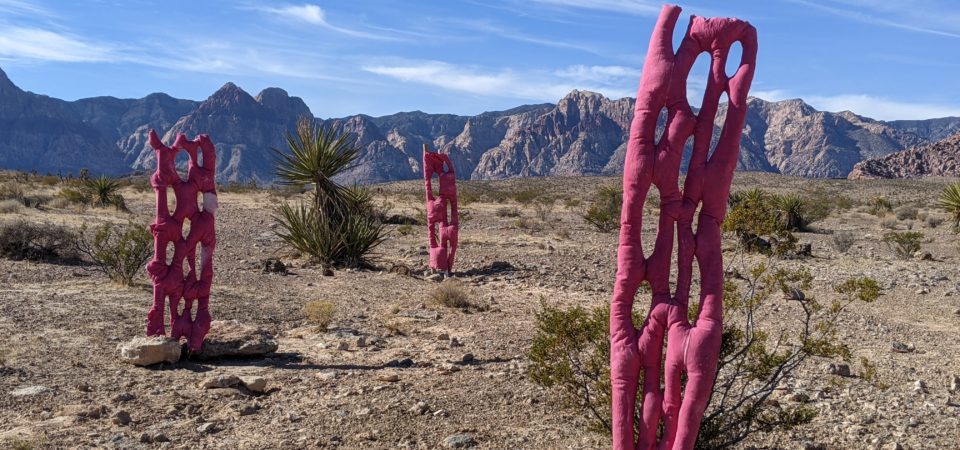“Home” 2021. Installation of soft sculptures naturally dyed with Cochineal.
Our survival is dependent on interconnectedness.
We know this, as ingrained into our DNA is the desire to belong, which is why it is so hard to go against the status quo. The problem is that we’ve built a socio-cultural system that is not interconnected enough, in the way it needs to be for our planet to thrive. We’ve fostered a system that benefits the select few, a system that benefits short-sighted interests.
Human-centric thinking has failed us in many ways. It has created the mindset that one thing is better than another. That things are to be owned. It has caused inequality, mass ecological destruction, and wars. How can we shift our values? We must muster our resolve to force the placidity in our minds to take a step back, to consider the interconnectivity that glues us all. The truth is that we are all in a gray space, though our broken systems make us believe we exist in black and white linear spaces.
The pandemic has only amplified the ways in which our linear ways of thinking are failing us, the climate, and vulnerable communities. To thrive, we must rethink our ways of thinking and develop a new approach that is mindful of the whole.
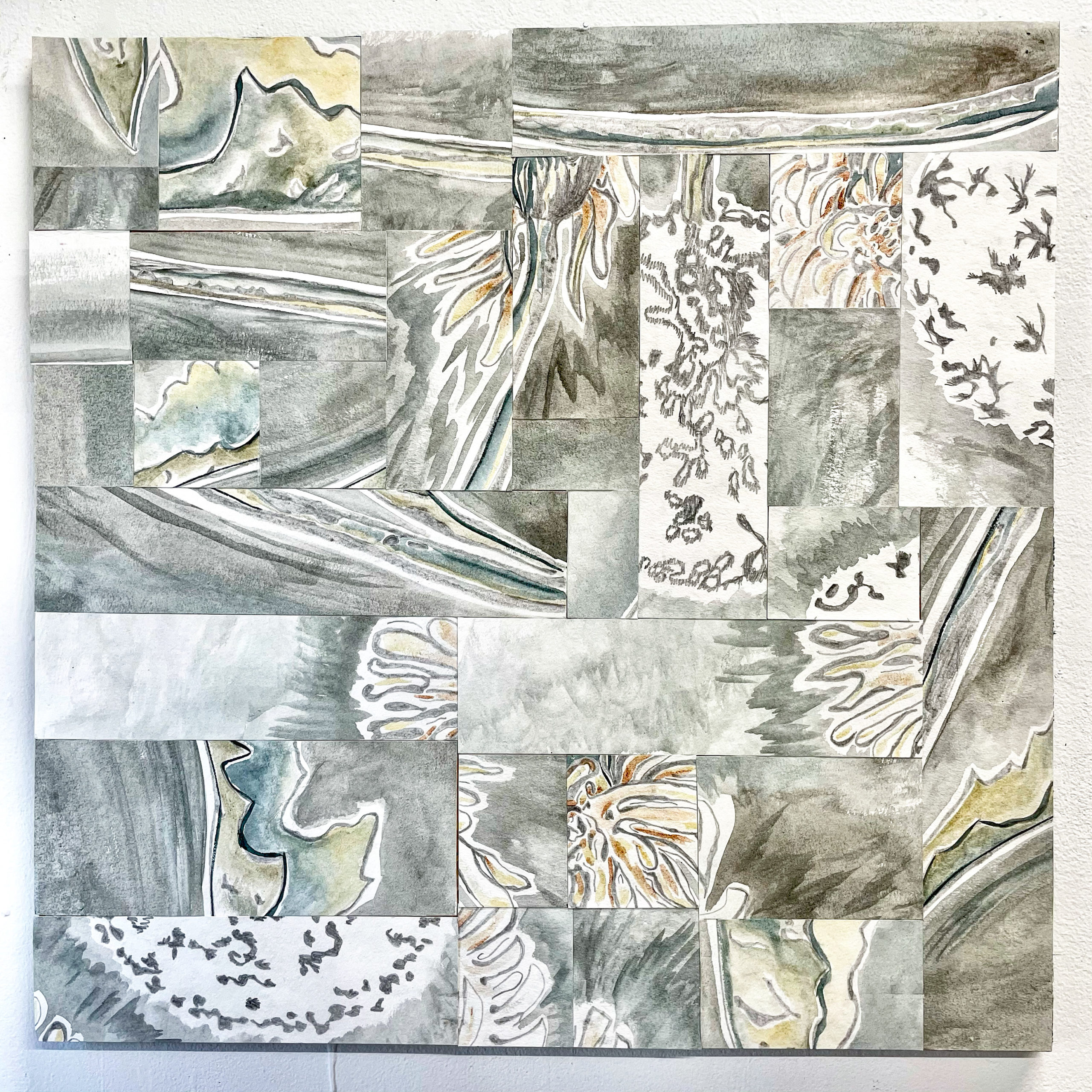
“Wishes”, 2021. Foraged pigments made from; Ash from the CA fires, grape lake pigment, minerals
I grew up in a world of opposites, shifting between two very different marginalized heritages. I’ve always felt like an “other,” never quite belonging to one or another. I’ve grown accustomed to living in this “gray” space in everything I do. If you listen to different perspectives, the truth will always be found somewhere in between. That is the benefit of being raised with multicultural perspectives; it forces you to create your own truths and know in your cells that the world is multi-faceted. In fact, truths are something we must often re-create because adaptation and change are the only dependable constants. I’ve always clung to art as a way for me to dissect, process, and create my own understanding of the world. Through my art, I traverse across boundaries. I aim to show connections. That each part should be considered important. I wish to carry on the historical craft of natural fiber and pigments but also embrace new technologies which move us mindfully forward.
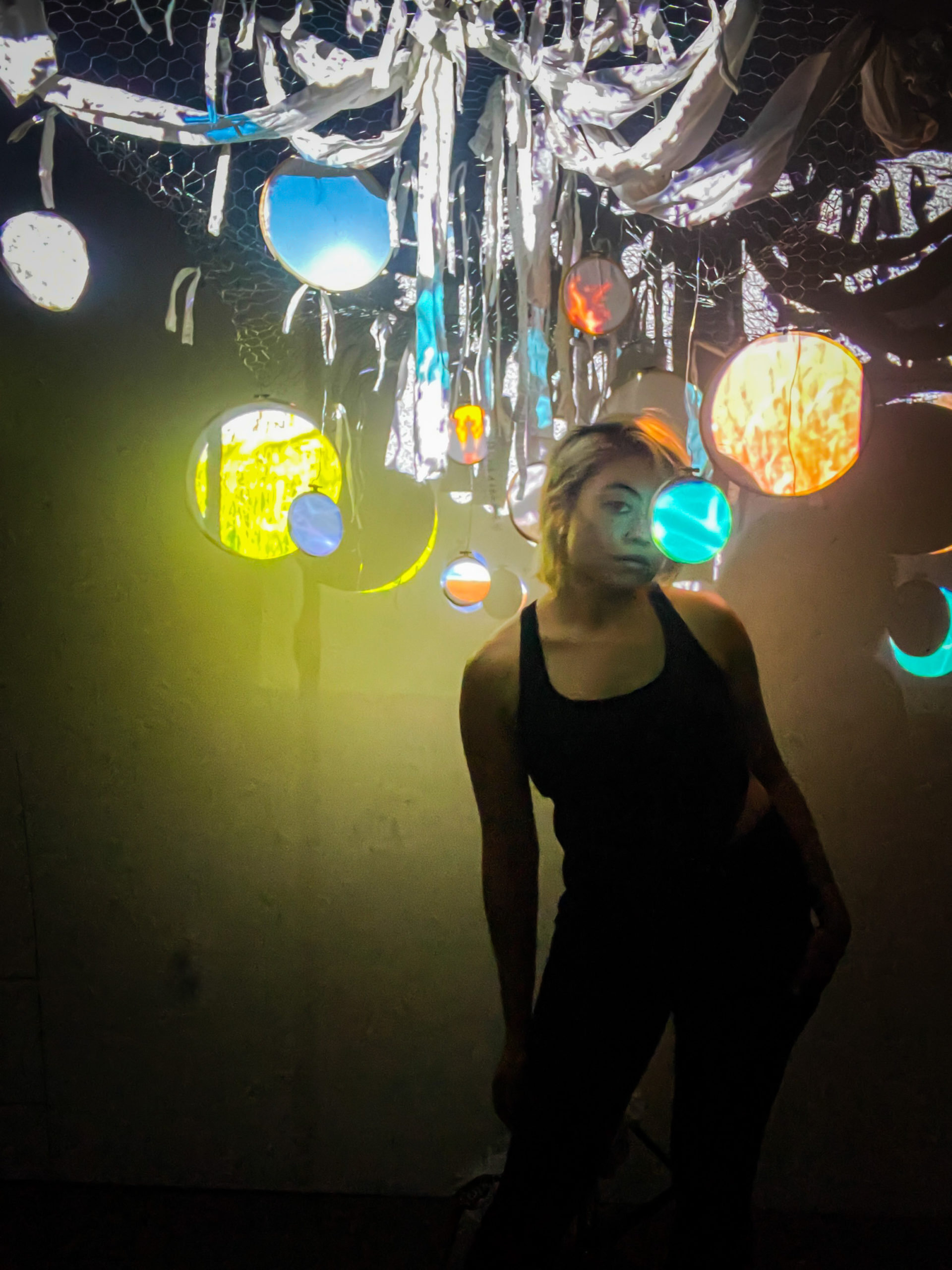
“Across the veil”, 2021. Projection mapped installation onto fabric and embroidery hoops.
We live in an era where many of us place more of our time and importance in virtual space. This dissociation with the physical realm increases the delusion that there are unlimited things to be created and owned. We see this reflected in the current trends in how we place value on art.
The current system we live in places more value on the cult of ideas without regard to the origin of materials we choose to communicate. This in turn creates a dilemma where we are no longer motivated to think about the interconnected consequences of the methods we choose to communicate.
We forget that, like life, art is not dependent on a made-up price tag to be relevant.
Art is a human phenomenon to share experiences. Creativity is a universal gift to explore new possibilities.
I often ask myself how I can create this balance; staying connected in the boundless thought realm while not neglecting our limited physical spaces essential to all life.
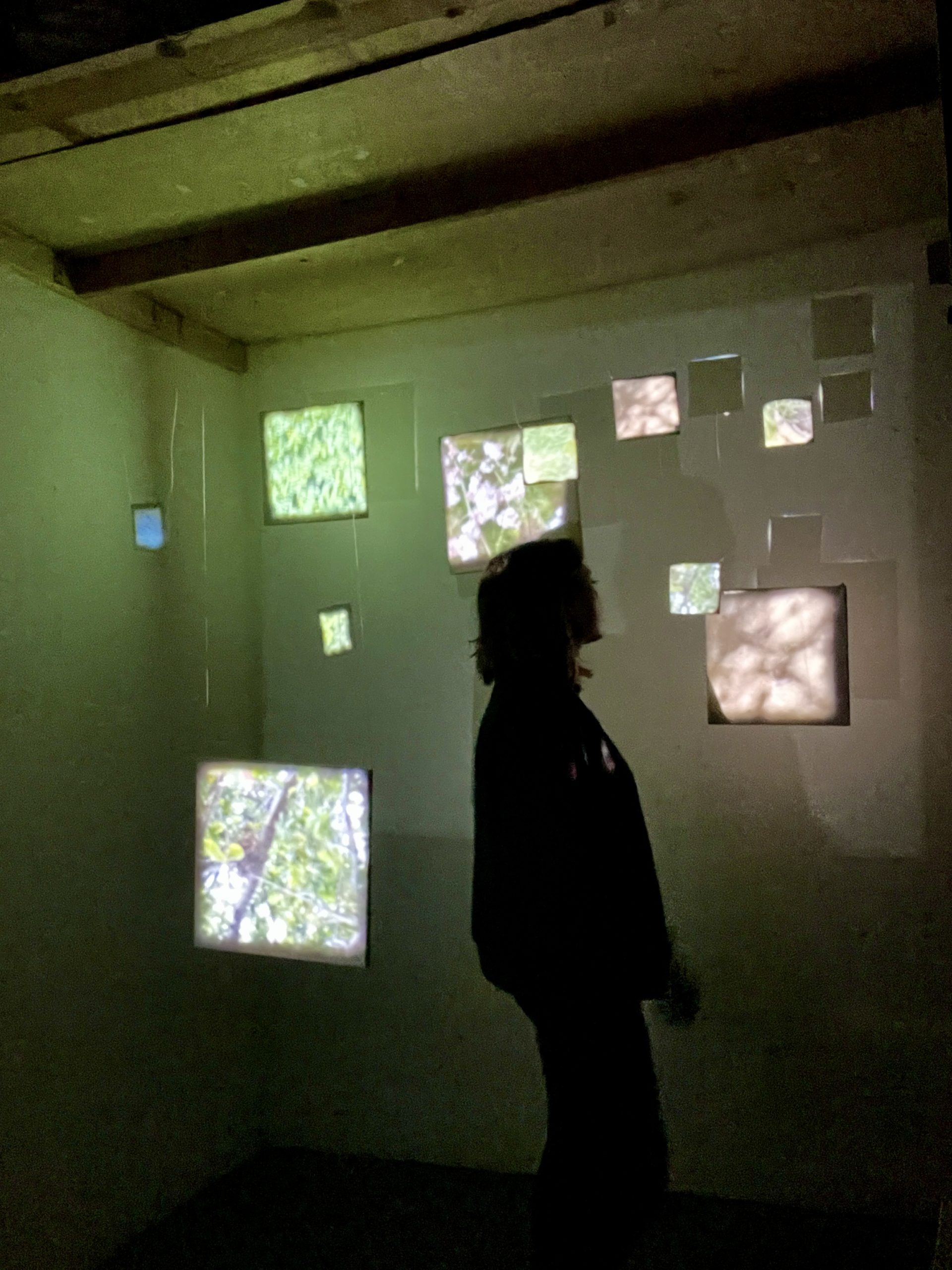
“Where are you” 2021. Projection mapped installation onto stretched rice paper.
I find the most truths while out in parks or hikes, spending time learning about plants and natural systems. It’s not just the fresh air, beauty, and calm you can find there. It is about the good, the bad, and the ugly. I love learning about how plants try to outcompete each other or that even Blueberries contain parabens as self-defense against microbial attacks. It reminds me that even with our broken systems, we are not separated from nature. An aspect of my artwork seeks to reconnect to the source of my materials. I enjoy foraging pigments, using recycled fibers, and choosing materials that can be reused. The more we foster a relationship with our materials, the more we will care for them.
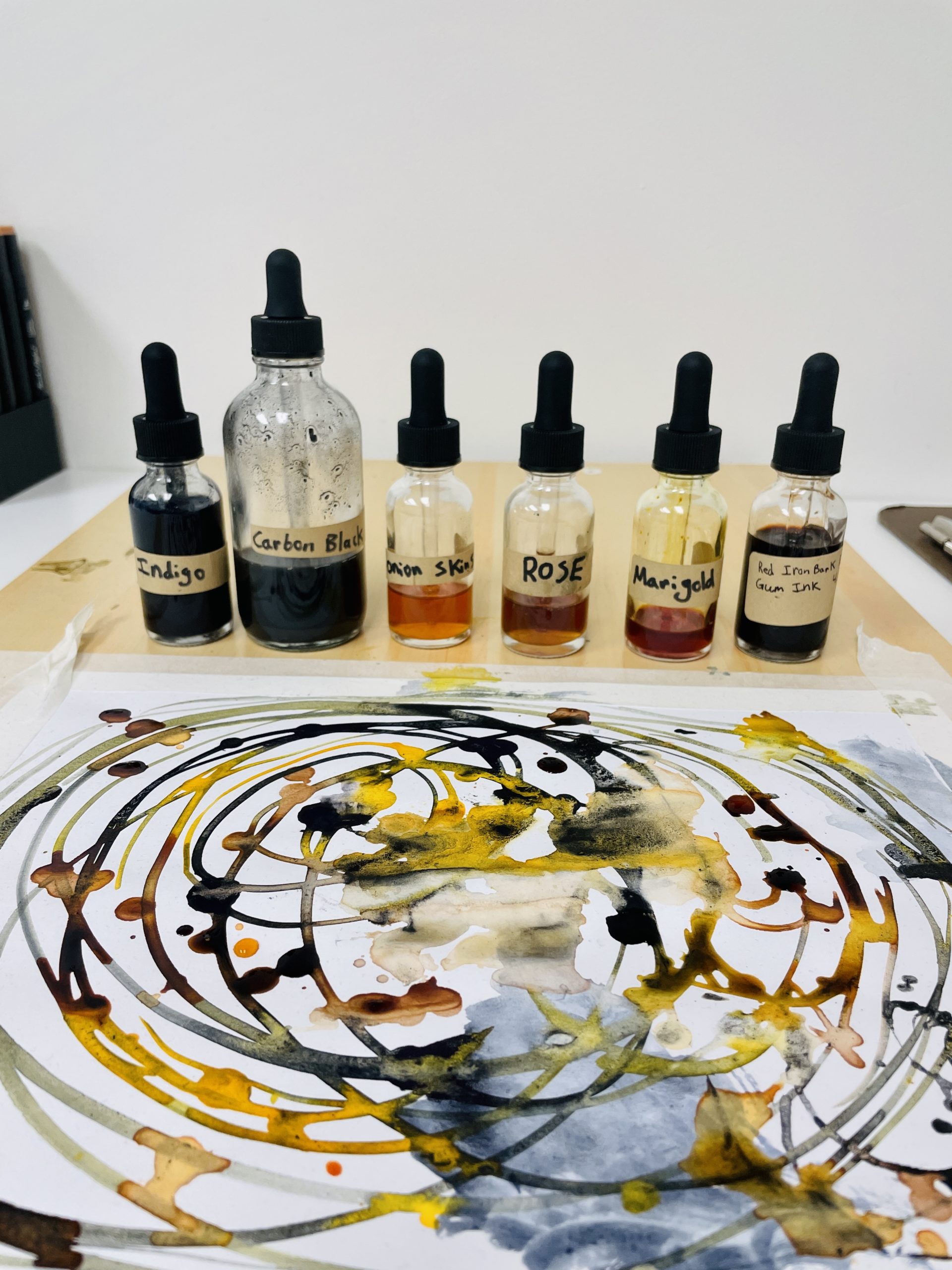
Wild Inks, 2021. A variety of plant-based inks.
The start of any revolution is powered by small questions that we ask ourselves. As an artist, asking these questions completely changed how I create. Over the past few years, I’ve re-thought the materials, tools, and ways in which I produce art. The role of the artist during times of major change is to imagine new futures. Artists show a new way of thinking, seeing, being. As artists, we must ask ourselves “how can you share with others the beauty of the new truths you dream?”
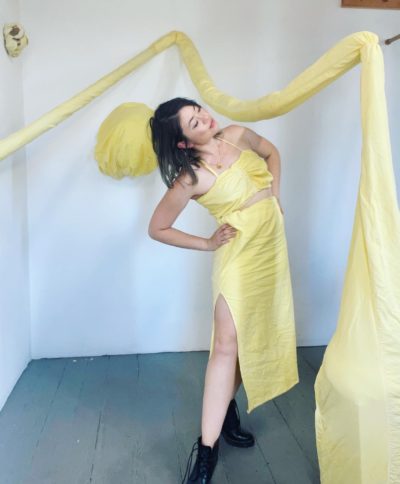 Nadine Allan is an interdisciplinary artist creating installations, soft sculptures, collages, and paintings. She combines multiple mediums to connect the audience with the environment through light projections, sound, recycled fibers, organic materials, and natural pigments. Her work focuses on ecofeminism, climate change, and the symbolic meaning of plants in communities. She has been in exhibition in numerous shows in NYC and Los Angeles, and her work has hung in the US Capitol building. She is a graduate of UCLA School of Fine Arts.
Nadine Allan is an interdisciplinary artist creating installations, soft sculptures, collages, and paintings. She combines multiple mediums to connect the audience with the environment through light projections, sound, recycled fibers, organic materials, and natural pigments. Her work focuses on ecofeminism, climate change, and the symbolic meaning of plants in communities. She has been in exhibition in numerous shows in NYC and Los Angeles, and her work has hung in the US Capitol building. She is a graduate of UCLA School of Fine Arts.
This article is part of the MAHB Arts Community‘s “More About the Arts and the Anthropocene”. If you are an artist interested in sharing your thoughts and artwork, as it relates to the topic, please send a message to Michele Guieu, Eco-Artist and MAHB Arts Community coordinator: michele@mahbonline.org.
Thank you. ~

